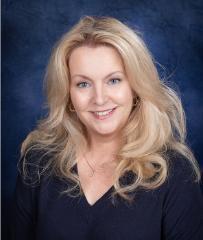Use Music and Exercise to Teach Math Fluency
By Kathleen Palmieri
 Each year as the math curriculum unfolds, it becomes evident that the number one area where many students struggle is computational fluency. The term “computational” to me has always meant strategies students use to solve a mathematical equation.
Each year as the math curriculum unfolds, it becomes evident that the number one area where many students struggle is computational fluency. The term “computational” to me has always meant strategies students use to solve a mathematical equation.
The importance of math fact practice cannot be overlooked. It’s the foundation for every conceptual skill we ask them to learn. Without good fact recall, many students become discouraged and disengaged with building their math knowledge.
In the past, it was common practice to stage “Math Minutes” where students rushed to demonstrate how well they knew multiplication or division facts. For many students, this rote way of “learning” was more stressful than helpful and did little for their math confidence. And it did nothing to help students with understanding place value.
This discussion from NCTM’s Principles and Standards for School Mathematics frames the work teachers need to accomplish:
“Computational fluency refers to having efficient and accurate methods for computing. Students exhibit computational fluency when they demonstrate flexibility in the computational methods they choose, understand and can explain these methods, and produce accurate answers efficiently.
“The computational methods that a student uses should be based on mathematical ideas that the student understands well, including the structure of the base-ten number system, properties of multiplication and division, and number relationships” (p. 152).
Where do we go from here?
In my 5th grade math class I have used music and movement to engage my students in computation fluency. What does that look like? I noticed a few years back when I inserted music into math, the rhythm and repetitive lyrics engaged my students.
I took this a step further and began to change lyrics in popular music, replacing them with math terms and multiples of numbers. My silly songs became a hit with my students, and they begged to make their own, which in turn helped them lead our “music and movement” for math class.
Multiplication songs are easily available just by doing a Google search, and many can be found on YouTube. Here are a few that have been well received by my students:
This video uses songs that were popular a few years ago and works through multiples of 12.
What math class wouldn’t be engaged by learning the multiples of 6 to a cover and beat of Taylor Swift’s song “Shake It Off?”
Combining Math Facts and…P.E.!
Then I came across several videos on YouTube that offered a physical education component to math fact recall/practice. Crash Course: Multiplication 📚 Math Fitness Run 📚 PE Game to Stimulate Mental + Physical Development is a favorite in my math class. The creators state the goal this way:
“Solve relatively simple multiplication questions while also having to dodge obstacles and move your body! This game is perfect for children of all ages, it forces them to move while also engaging their brains. Our goal with games like this is to stimulate mental and physical development while still having lots of fun!”
Students look at the expression on the bottom of the screen and move to the side that shows the product. Here’s the video:
Division Facts Math and P.E. Workout – “Exercise your mind and body as you practice your division facts!” The students stand and watch the equation come up and perform the exercise that is under the correct quotient. This is a much longer video, but can be stopped at any point. It also provides a great incentive to do more at the end of math class.
Several studies have found that including movement in lessons shows promise as a way to boost student interest, motivation (Vazou et al., 2012), and learning (Braniff, 2011). Movement has been found to lead to improvements in content knowledge, skills, and test scores in mathematics as well reading fluency (Adams-Blair & Oliver, 2011; Erwin, Fedewa, & Ahn, 2015; Browning et al., 2014).
The Results So Far
Recently I have begun to ask my students math facts as they enter the classroom in the morning. I am careful to differentiate what each student is asked as I work to build their math confidence. Each morning they come running up to ask me for a “harder” problem and have reportedly been practicing their math facts much more at home.
Incorporating fun ways to engage students in learning math facts – including songs, movement, and conversational fact checking – has proven successful. I enjoy jumping in and moving along with my students’ learning, too! Give it a try – I’m sure you’ll have many more smiles in your math class.
Works Cited
Fedewa, A. L., Ahn, S., Erwin, H., & Davis, M. C. (2015). A randomized controlled design investigating the effects of classroom-based physical activity on children’s fluid intelligence and achievement. School Psychology International, 36(2), 135-153. https://doi.org/10.1177/0143034314565424
Browning, C., Edson, A.J., Kimani, P., & Aslan-Tutak, F. (2014). Mathematical content knowledge for teaching elementary mathematics: A focus on geometry and measurement. Mathematics Enthusiast, 11 (2), 333-383.
Kathleen Palmieri is a National Board Certified Teacher and NBCT Professional Learning facilitator. She is a fifth grade educator in upstate New York who reviews and writes regularly for MiddleWeb. With a passion for literacy and learning in the classroom, she participates in various writing workshops, curriculum writing endeavors, and math presentations.
As a lifelong learner, she is an avid reader and researcher of educational practices and techniques. Collaborating with colleagues and globally on X/Twitter @Kathie_Palmieri and expanding her education adventures at www.kathleenpalmieri.com are ongoing practices.


































